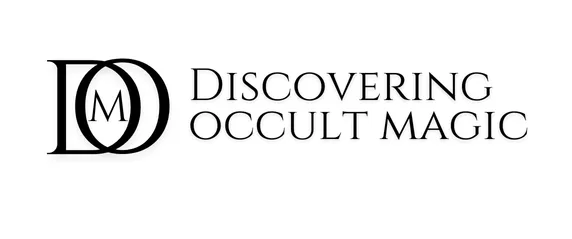Introduction
In this post, we’ll explore the art of Ma’at godform meditation, a practice that invites you to embody the principle of divine balance and truth. We’ll begin by examining who Ma’at truly is, not merely as an ancient deity, but as a living archetype of cosmic harmony. From there, we’ll unpack her symbolic and magical attributes, consider the incenses traditionally associated with her presence, and conclude with clear, step-by-step guidance for performing the meditation yourself.
Ma’at: The Feather of Truth and the Heart of the Cosmos
In the great cosmic drama of ancient Egypt, no deity sits more quietly at the center of everything than Ma’at. She doesn’t throw lightning bolts or demand temples of gold. She doesn’t lead armies or stir the heavens in dramatic fashion. But make no mistake, without Ma’at, the universe would collapse into chaos.
Ma’at is balance. She is truth. She is the invisible order that keeps the stars in motion, the Nile in its course, and justice in the courts of kings. And for magicians, mystics, and seekers working with godforms, Ma’at offers a path of deep alignment, not just with the world around us, but with the natural rhythm of the soul.
Who is Ma’at?
Ma’at is both a goddess and a principle. Her name means “truth,” but it also encompasses concepts like harmony, justice, integrity, and cosmic balance. In mythology, she was born at the moment of creation, when the chaotic waters of Nun were separated and the first mound of order emerged. From that moment forward, Ma’at was the standard by which all things were measured.
She’s often depicted as a regal woman wearing an ostrich feather in her headdress, or sometimes just as the feather itself. That feather became her symbol and plays a starring role in the famous Weighing of the Heart ritual in the afterlife.
Ma’at in the Hall of Judgement
The ancient Egyptians believed that after death, a soul would journey to the Hall of Two Truths. There, it would undergo the final test: where the heart of the deceased was weighed on a scale against the feather of Ma’at.
A heart heavy with wrongdoing would tip the scales, and be devoured by the crocodile-headed goddess Ammit. But a heart that balanced with Ma’at? That soul would be welcomed into the eternal field of reeds.
This wasn’t just an end-of-life judgment, it was a moral compass for daily living. To “live in Ma’at” meant to live honestly, with respect for balance, fairness, and the rhythms of nature and community.
Ma’at in Magical and Mystical Practice
For modern practitioners, Ma’at offers a powerful archetype of spiritual alignment. Working with her can:
- Clarify decision-making by anchoring you in higher truths
- Bring balance during chaotic times
- Guide ethical questions and moral reflection
- Enhance rituals of justice, harmony, or purification
Some invoke Ma’at during rituals of truth-telling, especially when uncovering self-deception or shadow aspects. Others use her image in meditation, visualising her feather hovering above their own heart, asking: “What am I really carrying here?“
In godform assumption practices, stepping into Ma’at’s presence means embodying grace, poise, and the power of aligned truth.
Use of Incense
In godform meditations where the practitioner visualises, embodies, or communes with a deity or divine archetype, incense play both a symbolic and practical role. Here’s why it’s commonly used:
1. Symbolic Bridge Between Worlds
Incense smoke rising upward is often seen as a metaphor for prayers, intentions, or offerings ascending to the divine. In many esoteric systems, it’s thought to help bridge the physical and spiritual realms, inviting the presence of the godform into the ritual space.
2. Creation of Sacred Space
The scent and smoke of incense help mark the space as sacred, setting it apart from ordinary reality. This sensory cue can help shift the mind into a more receptive, meditative, or altered state of consciousness—ideal for godform work.
3. Offering to the Deity
In traditions ranging from Egyptian to Hindu to Hermetic, incense is considered a proper and pleasing offering to gods and spirits. Using it during godform meditation signals respect and a willingness to engage ritually with the divine presence.
4. Alignment with Elemental Energies
Incense corresponds to the element of Air (and sometimes Fire, due to the burning), both of which are linked to thought, communication, and spirit. Since godform meditations often involve mental visualisation and spiritual communion, invoking Air can be beneficial.
5. Triggering Trance States
Certain scents, like frankincense, myrrh, or sandalwood are mildly psychoactive in the sense that they can promote relaxation, focus, or trance. Over time, a specific incense can also act as a ritual anchor training your mind to enter a meditative state whenever that scent is present.
6. Tradition and Continuity
Many godform practices are rooted in ceremonial magic, Thelema, Hermetic Qabalah, or ancient polytheistic traditions. In those systems, incense is a traditional tool. Using it aligns the practitioner with a lineage of ritual practice, which can lend psychological and magical weight to the experience.
Incenses Typically Associated with Ma’at
1. Frankincense
- Why: Uplifting, purifying, and sacred. It was widely used in Egyptian temple rites.
- Symbolism: Solar energy, truth, sanctity, and spiritual illumination—perfectly aligned with Ma’at’s cosmic role.
2. Sandalwood (white or yellow)
- Why: Soothing and meditative without being heavy.
- Symbolism: Inner balance, peace, and spiritual refinement.
3. Myrrh (in small quantity)
- Why: Myrrh is more commonly associated with death and mourning (more fitting for Osiris), but a light touch can be used to invoke sacred seriousness and ancient wisdom.
- Symbolism: Grounding the airy nature of Ma’at into ethical action and accountability.
4. Copal (especially white copal)
- Why: Clean-burning resin with an elevating, clarifying scent.
- Symbolism: Clarity, purification, ceremonial truth—beautifully aligned with Ma’at’s feather of truth.
5. Blue Lotus (optional, rare)
- Why: Symbol of spiritual awakening and divine order in ancient Egypt.
- Symbolism: Mystical insight within the clarity of Ma’at’s order—used sparingly.
6. Lemongrass, Verbena, or Lemon Peel (modern additions)
- Why: Bright, clear, and mentally activating—symbolizing mental precision and truth.
- Symbolism: Piercing through illusion; mental clarity in harmony with universal law.
Godform Meditation: Becoming Ma’at, the Feather of Truth
This meditation is designed to help you attune to the energy of Ma’at, the ancient Egyptian goddess of truth, justice, and cosmic order. You can use it as a centering practice, a prelude to ritual, or simply a way to reconnect with your inner balance when the world feels chaotic.
Before you begin your meditation, find a quiet space. Dim the lights if possible, and have a candle or feather nearby as a symbol of Ma’at. If you prefer music, soft droning tones or Egyptian temple ambiance can help set the tone.
Step One: Set the Sacred Space
If using incense, light them. Sit comfortably with your spine straight. Take a few deep, calming breaths. As you inhale, feel yourself becoming more present. As you exhale, release any tension or distraction.
If you like, draw a simple banishing pentagram or perform the Qabalistic Cross to clear your energetic space.
Now, say aloud or internally:
“I prepare this space in truth, in balance, in harmony.
By the feather of Ma’at, I open the gate within.”
Step Two: Visualise the Godform of Ma’at
Begin to build the godform in your mind’s eye.
See a tall, graceful woman standing before you. She wears a white, flowing gown and a feathered headdress, the single ostrich plume of Ma’at resting over her crown. Her presence is serene but powerful, calm but commanding. She radiates quiet strength.
Her eyes, deep and knowing, seem to see not just who you are, but who you could be, if fully aligned.
She holds no weapons. She needs none.
Around her, a soft golden light pulses gently, like sunlight through silk. You notice that the ground beneath her feet is stable, even in shifting sands, the very embodiment of inner equilibrium.
Step Three: Merge with Ma’at
Now, allow her image to step closer, until she stands directly before you. Feel her gaze meet yours.
Say silently or aloud:
“Lady of Truth,
Feather of the Scale,
I welcome you into my temple.”
Feel her essence begin to merge with yours, not overpowering, but harmonising. As she enters your being, your posture straightens. Your breath evens out. Your thoughts quiet.
Visualise the feather of Ma’at now resting gently above your heart. Not heavy, not burdensome, just present. Steady. A reminder of your own inner compass.
Step Four: Assume the Godform
Now, feel yourself becoming Ma’at.
Your limbs feel light and strong. Your breath is smooth, your heart open. You are the still point in the storm, the balance between action and silence, strength and softness, fire and water.
Hold this state for a few minutes.
You might say inwardly:
“I am Ma’at.
I am balance.
I am harmony between all things.”
If your mind wanders, simply return to the feeling of the feather above your heart.
Step Five: Return and Ground
When you are ready, allow the godform to gently separate from you. Ma’at steps back, her presence still felt but now outside you once more, a guide and companion, not a possession.
Thank her with sincerity:
“Ma’at, Lady of Balance,
I thank you for walking with me.
May I carry your truth in all I do.”
Take a few deep breaths.
Feel your body. Wiggle your fingers. Open your eyes.
If you’ve used a candle, snuff it with intention. If you’ve used a feather, hold it to your heart for a moment before placing it on your altar or somewhere meaningful.
After the Meditation
Notice how you feel. You might experience a subtle shift in how you carry yourself or how clearly you perceive things.
Working regularly with the godform of Ma’at can help you become more attuned to moments when you’re out of alignment and gently guide you back to center.
Ma’at and Ma’atic Living Today
We may not be navigating the Nile or building tombs anymore, but the principle of Ma’at is as relevant now as it was in antiquity. In a world full of noise, half-truths, and frantic pace, Ma’at is the still point in the turning sphere.
To live with Ma’at is to strive for balance: in speech, in action, in the sacred and the mundane. It’s about walking in truth, not because it’s convenient, but because it’s right.


